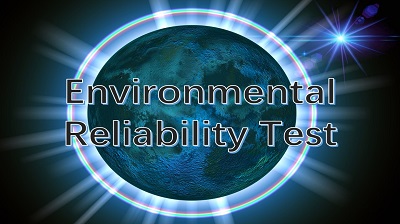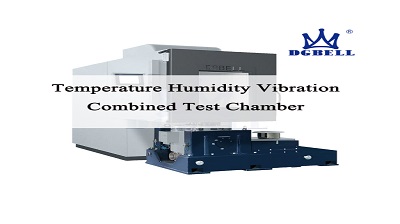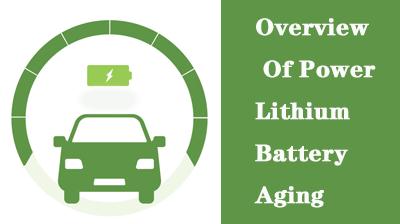Về thử nghiệm mô phỏng môi trường
Thử nghiệm mô phỏng môi trường là thử nghiệm để xác minh độ tin cậy chức năng của sản phẩm trong quá trình sử dụng, vận chuyển và lưu trữ. Là để sản phẩm tiếp xúc với các điều kiện môi trường tự nhiên hoặc nhân tạo để trải qua tác động của nó, để đánh giá hiệu suất của sản phẩm trong các điều kiện môi trường thực tế của việc sử dụng, vận chuyển và lưu trữ, đồng thời phân tích và nghiên cứu mức độ ảnh hưởng và cơ chế tác động của các yếu tố môi trường.
Buồng thử nghiệm mô phỏng môi trường là phương pháp để các doanh nghiệp hoặc tổ chức xác minh chất lượng của nguyên liệu thô, bán thành phẩm và thành phẩm trong điều kiện vận chuyển, xử lý, rung động, v.v. Mục đích là để xác minh xem vật liệu và sản phẩm có đáp ứng các mục tiêu chất lượng mong đợi trong R & D, thiết kế và sản xuất hay không bằng cách sử dụng các thiết bị thử nghiệm môi trường khác nhau. Nó được sử dụng rộng rãi trong các trường Cao đẳng và đại học, hàng không, hàng không vũ trụ, quân sự, đóng tàu, thợ điện, điện tử, điều trị y tế, dụng cụ và đồng hồ đo, dụng cụ dầu khí, công nghiệp hóa dầu, điều trị y tế, ô tô và xe máy và các lĩnh vực khác.
Buồng thử nghiệm mô phỏng môi trường có thể thực hiện nhiệt độ cao, nhiệt độ thấp, sốc nhiệt độ (khí và lỏng), ngâm tẩm, chu kỳ nhiệt độ, áp suất thấp, nhiệt độ cao và thấp và áp suất thấp, nhiệt ẩm liên tục, nhiệt ẩm xen kẽ, nấu áp suất cao, bụi cát, chống nổ, ăn mòn phun muối, ăn mòn khí, nấm mốc, mưa, bức xạ mặt trời, lão hóa ánh sáng, v.v. theo IEC, mil, ISO, GB, GJB và các tiêu chuẩn khác hoặc yêu cầu của người dùng.
(1) Thử nghiệm áp suất thấp: thử nghiệm áp dụng cho việc giảm áp suất nhanh chóng của vũ khí được vận chuyển bằng đường hàng không trong khoang hàng của máy bay, vũ khí sử dụng trên cao nguyên và vũ khí trên không sau khi máy bay bị thương. Mục đích của thử nghiệm là kiểm tra hiệu suất phục vụ của vũ khí trong môi trường áp suất thấp và tác động của việc giảm áp suất nhanh chóng đến hiệu suất của vũ khí. Chiều cao tối đa của mô phỏng có thể đạt tới 30000m (m), và giá trị nhiệt độ tương ứng với chiều cao sẽ được lấy trong quá trình thử nghiệm.
(2) Thử nghiệm nhiệt độ cao: trong thử nghiệm, vũ khí ở trong không khí nhiệt độ cao, nhưng không tiếp xúc trực tiếp với ánh sáng mặt trời. Thử nghiệm này nhằm mục đích lưu trữ hoặc sử dụng vũ khí trong nhà hoặc không gian hạn chế hoặc gần các nguồn nhiệt như động cơ trong mùa nhiệt độ cao. Thử nghiệm này chỉ được thực hiện khi thử nghiệm bức xạ mặt trời không thể xác minh tác động của nhiệt độ cao. Mục đích của thử nghiệm là để kiểm tra hiệu suất lưu trữ hoặc sử dụng trong môi trường nhiệt độ cao.
(3) Thử nghiệm nhiệt độ thấp: thử nghiệm này áp dụng cho các mẫu thử có khả năng được sử dụng trong môi trường nhiệt độ thấp trong suốt vòng đời.
(4) Thử nghiệm sốc nhiệt: thử nghiệm này áp dụng cho các loại vũ khí thường xuyên phải chịu những thay đổi nhiệt độ cực nhanh trong khu vực sử dụng hoặc chế độ sử dụng đã định trước. Ví dụ: các silo thiết bị điện tử, tên lửa và thiết bị quang điện tử trên máy bay cất cánh từ sân bay sa mạc và bay lên độ cao lớn; Vũ khí rơi từ độ cao lớn xuống khu vực sa mạc; Vũ khí được chuyển từ trong nhà ra ngoài trời ở Bắc Cực. Chỉ thực hiện thử nghiệm sốc nhiệt trong không khí và có thể thực hiện thử nghiệm sốc nhiệt từ không khí sang nước trong tương lai. Mục đích của thử nghiệm sốc nhiệt là để kiểm tra tác động của sự thay đổi đột ngột của nhiệt độ môi trường xung quanh đến hiệu suất của vũ khí.
(5) Thử nghiệm bức xạ mặt trời (ánh sáng mặt trời): Đây là thử nghiệm đối với vũ khí và vật liệu chế tạo vũ khí tiếp xúc với ánh sáng mặt trời. Ảnh hưởng của bức xạ mặt trời đối với việc sử dụng hoặc lưu trữ vũ khí hoặc vật liệu liên quan có thể được thử nghiệm thông qua thử nghiệm ánh nắng mặt trời.
(6) Thử mưa: thử nghiệm áp dụng cho các loại vũ khí có thể bị mưa trong quá trình sử dụng. Thử mưa bao gồm thử mưa khi không có gió và thử mưa khi có gió. Mục đích của thử mưa là để kiểm tra hiệu suất chống thấm nước của thiết bị che mưa và hiệu suất của vũ khí trong và sau khi mưa. Độ tin cậy của mạng lưới Trung Quốc
(7) Thử nghiệm chống ẩm: thử nghiệm này áp dụng cho vũ khí có thể sử dụng trong môi trường ấm và ẩm. Các khu vực nhiệt đới có các mùa khác nhau trong cả năm và vĩ độ trung bình, đây là môi trường ấm và ẩm như vậy. Mục đích của thử nghiệm là để kiểm tra khả năng thích ứng của vũ khí với môi trường ấm và ẩm.
(8) Kiểm tra chống nấm mốc: nhiệt độ và độ ẩm là điều kiện cho sự phát triển của vi khuẩn, chúng tồn tại rộng rãi ở vĩ độ nhiệt đới và trung bình. Tất cả các loại vũ khí và thiết bị thông dụng tiêu chuẩn đều phải được thiết kế để chống nấm mốc. Mục đích của thử nghiệm là đánh giá mức độ nấm mốc của vũ khí và tác động của nấm mốc đối với hiệu suất hoặc việc sử dụng vũ khí.
(9) Thử nghiệm phun muối: muối phân bố rộng rãi trên trái đất. Có muối trong đại dương, khí quyển, mặt đất, hồ và sông, đặc biệt là ở các vùng ven biển, nơi có hàm lượng muối tương đối lớn và hàm lượng muối trong đại dương là lớn nhất. Do đó, tất cả các loại vũ khí đều ở trong một số dạng môi trường muối trong vòng đời của chúng. Mục đích của thử nghiệm phun muối là để kiểm tra ảnh hưởng của khí quyển ẩm chứa muối đến hiệu suất của vũ khí, đặc biệt là hiệu suất của lớp phủ bảo vệ và tính tương thích của vật liệu.
(10) Thử nghiệm cát và bụi: thử nghiệm này áp dụng cho tất cả các loại vũ khí cơ học, điện, điện tử và điện hóa được sử dụng trong cát khô hoặc không khí có hàm lượng bụi cao. Thử nghiệm được chia thành thử nghiệm nâng bụi và thử nghiệm nâng cát. Bụi và cát mịn được sử dụng để thử nghiệm nâng bụi. Bụi mịn có thể xâm nhập vào các khe hở, vết nứt, ổ trục và mối nối. 149 ~ 850 được sử dụng để thử nghiệm nâng cát Các hạt cát μ M (micron), các hạt cát lớn và sắc nhọn có thể gây ra xói mòn và tắc nghẽn, đồng thời làm giảm hiệu quả, độ tin cậy và khả năng bảo trì của thiết bị. Mục đích của thử nghiệm cát và bụi là để kiểm tra khả năng sử dụng và lưu trữ của vũ khí trong môi trường cát và bụi.
(11) Thử nghiệm ngâm: thử nghiệm ngâm bao gồm thử nghiệm ngâm, thử nghiệm nhỏ giọt và thử nghiệm nước áp suất. Thử nghiệm ngâm áp dụng cho thiết bị yêu cầu độ kín nước và thiết bị được sử dụng ngâm hoàn toàn hoặc một phần trong nước. Trong một số trường hợp, thử nghiệm này có thể thay thế thử nghiệm mưa để kiểm tra độ kín nước. Mục đích của thử nghiệm là để kiểm tra khả năng ngâm trong nước của vũ khí mà không bị rò rỉ nước.
Cuối cùng nhưng không kém phần quan trọng, GDBELL có 15 năm kinh nghiệm sản xuất và R&D và là nhà sản xuất chuyên nghiệp về buồng thử nghiệm môi trường. Hơn nữa, sản phẩm của chúng tôi có các biện pháp phòng ngừa an toàn chất lượng cao và chưa bao giờ xảy ra tai nạn an toàn trong các thiết bị được bán. Nếu bạn muốn biết về buồng thử nghiệm môi trường, vui lòng liên hệ với chúng tôi!










